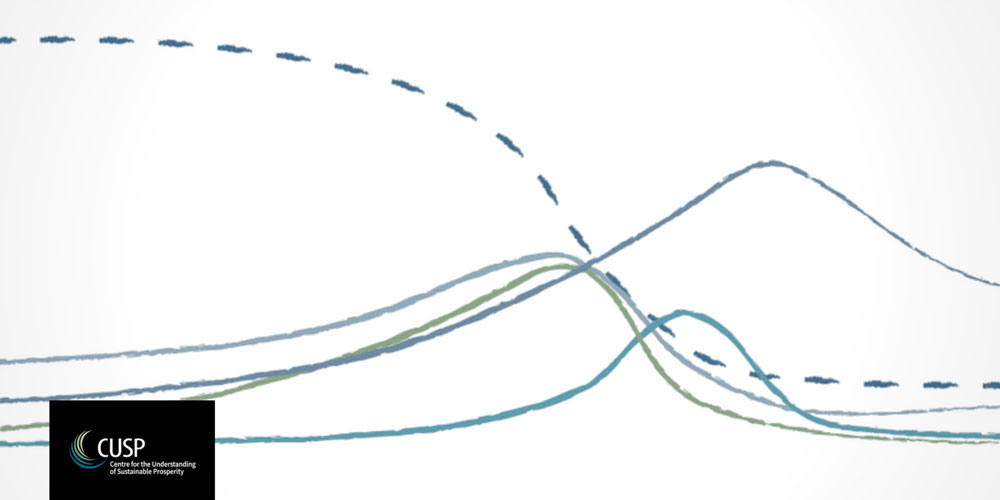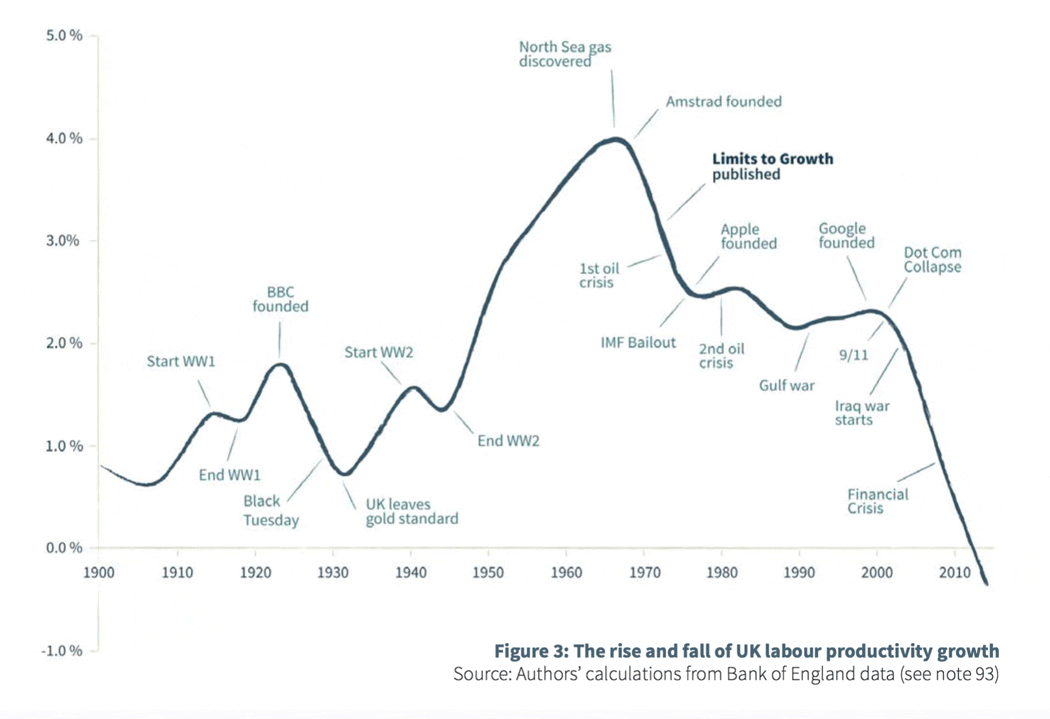Limits revisited
To coincide with the launch of a new All-Party Parliamentary Group on Limits to Growth, CUSP Director Tim Jackson discusses the continuing relevance of the Club of Rome’s groundbreaking report in today’s context and introduces Limits Revisited, a new review of the debate, co-written with environmental writer Robin Webster.
Blog by TIM JACKSON

In July 2008, just two months before the collapse of Lehman brothers, oil prices reached an unprecedented $147 a barrel, five times higher than they had been in 2003. The high price of oil led to a dramatic rise in the price of other commodities. Food prices escalated, sparking riots from Bangladesh to Haiti and raising the spectre of imminent scarcity in a world of limits.
Almost four decades earlier, a team of scientists from MIT had delivered a stark warning about the possibility of such impacts. Charting the dynamics of ‘overshoot and collapse’ in a world reliant on ever-increasing consumption of material resources, the Club of Rome’s 1972 report on the Limits to Growth suggested that such changes would be visible ‘within the next century’. Were the Club of Rome projections already coming true? There were certainly those who believed they were.
Those fears may have been premature. The ‘price signals’ from the summer of 2008 spoke of structural shortages rather than physical depletion. But the impacts provided a graphic illustration of what scarcity looks like in economic and in social terms. And the crisis, when it came, raised equally pressing concerns.
It soon transpired that the advanced economies had mired themselves in unsustainable debt. When the debts proved unpayable, the impacts were dramatic. Financial institution after financial institution fell prey to instability. Governments scrambled to contain the damage.
Seven and a half years later, the global economy is still haunted by continuing fragilities. Debt overhangs, volatile commodity prices and trade imbalances conspire with demographic change, declining productivity growth (in advanced nations) and structural change (in emerging economies) to deliver a variety of adverse conditions for prosperity.
Climate change adds a particular twist to this near-perfect storm. The Paris Agreement signed in December 2015, committed nations across the world to ‘pursue efforts’ to limit global warming to less than 1.50C above the pre-industrial average. Achieving this will require a massive and accelerated transformation in capital markets: a transformation which would be challenging at the best of times, and these are evidently not the best of times.
In short, the question of limits is as relevant now as it ever was.
These concerns have motivated the launch of a new All-Party Parliamentary Group (APPG) on the Limits to Growth. Chaired by Caroline Lucas MP, its aim is to stimulate a cross-party dialogue on prosperity within limits and to explore the economic risks associated with resource constraints, planetary boundaries and the threat of a ‘secular stagnation’.
To coincide with the launch of the APPG and to provide a foundation for its work over the next five years, environmental writer Robin Webster and I have put together a short review of the limits debate. Limits Revisited outlines the Club of Rome’s arguments, traces the history of responses to the report and dispels some of the myths surrounding it. We unravel the arguments that have raged for over forty years in its aftermath and explore more recent findings which relate to the original hypothesis.
What we found is salutary. There is unsettling evidence that society is still following the ‘standard run’ of the original study—in which overshoot leads to an eventual collapse of production and living standards. Detailed recent studies suggest that ‘peak production’ of some key resources may only be decades away.
Certain other limits to growth—less visible in the 1972 report—present equally pressing challenges to modern society. We highlight, in particular, recent work on society’s proximity to ‘planetary boundaries’ and illustrate this through the challenge of meeting the Paris Agreement.
We also explore the economic challenge of a ‘secular stagnation’. Startling declines in productivity growth over the last five decades indicate, as US economist Robert Gordon has suggested, that ‘future economic growth may gradually sputter out’.
If the Club of Rome is right, the next few decades are decisive. One of the most important lessons from the original study is that early responses are absolutely vital as limits are approached. Faced with these challenges, there is clearly a premium on creating political space for change and developing positive visions for social progress. A part of the aim of the APPG is create that space.
The APPG on Limits to Growth is holding its launch event on Tuesday 19 April 2016 in the House of Commons. When we released tickets for the event, over the Easter holiday weekend a few weeks ago, they were oversubscribed within four days. Forty-four years after the Club of Rome’s report was first published, it seems, this is a conversation still clamouring to be heard.




